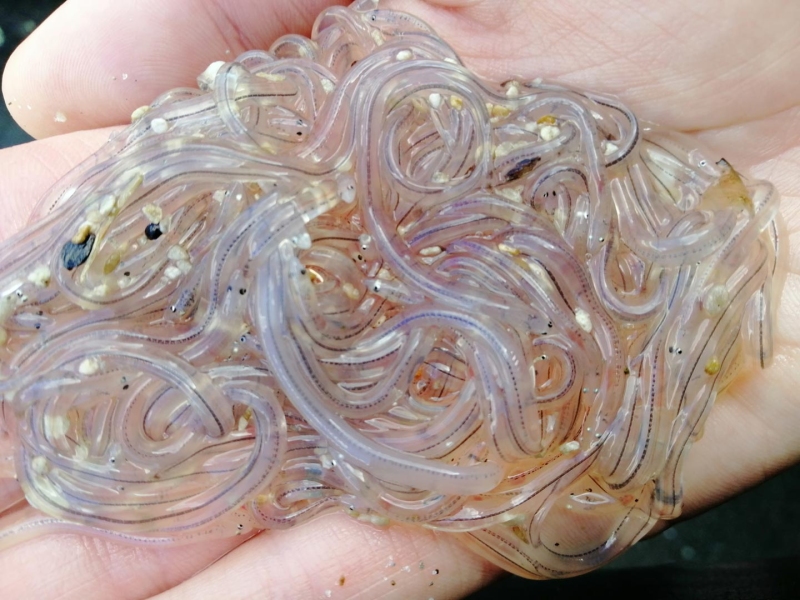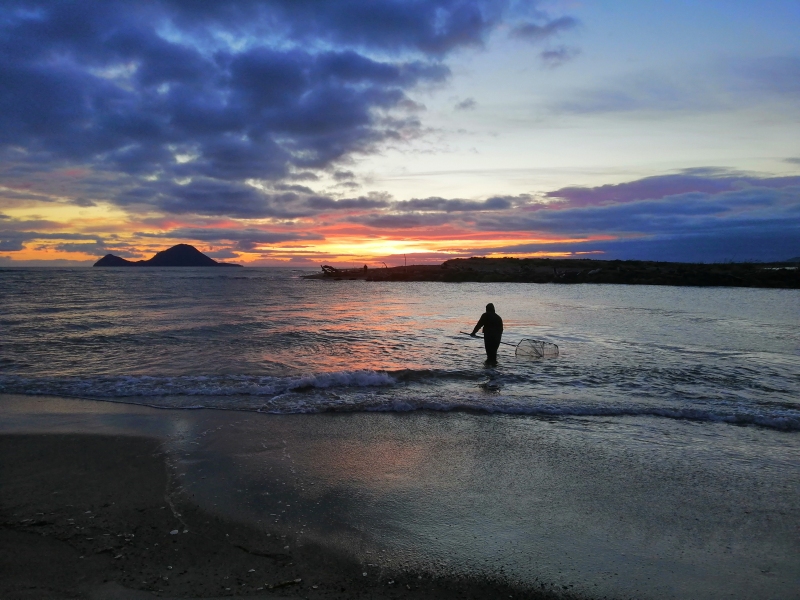Tuna or freshwater eels are a very significant, widely-valued, culturally iconic mahinga kai species.
Tuna have an unusual life-cycle that sees them travelling between ocean and freshwater environments. Much remains unknown about the marine phase of the tuna life-cycle especially their spawning ground locations and how the larvae make the precarious journey back to Aotearoa.
Once the larvae arrive at New Zealand’s coastline, they transform into glass eels, named for their translucent appearance. It’s not until they enter freshwater that they change colour and become elvers (juvenile eels).
Under the light of the moon where the river meets the sea, NIWA researchers are catching the elusive glass eels.
Freshwater fish ecologist Dr Eimear Egan calls it “blind scooping”. “You’re standing in the surf at night, there are no lights and you can’t see what you’re trying to catch.”
Dr Egan is leading a project to find out more about the mysterious marine lives of longfin and shortfin eels. She wants to find out where the larvae come from, which ocean currents they’re using to bring them to the New Zealand coast and whether shortfin and longfin eels use different spawning grounds and ocean currents to get here.
To find out more about the marine phase of an eel’s lifespan, Dr Egan and her team have been working at three river mouths over the last few months using modified whitebait nets and custom made fyke nets to catch the glass eels for further study.
Most of the eels arrive about two hours after sunset and we sample when there are new and full moons and when the tides are at their highest,” Dr Egan says.
The team also often mobilise after heavy rain as glass eels may move into rivers at that time. The chosen rivers for the research are the Rangitāiki, Grey and Ashley Rivers and the team are working with Ngāti Awa Rangitāiki Hapū Coalition, Rangitāiki River Forum, Ngāti Waewae and Te Ngāi Tūāhuriri Tuahiwi (Ngāi Tahu), the mana whenua.
Dr Egan says, “we are worried about changing ocean conditions – for example marine heatwaves that have occurred recently. We need to know more about what that does to New Zealand’s freshwater fish as some of them spend periods of their life at sea."
“If we can better predict the implications of these extreme events on the survival and recruitment of glass eels, then we can feed this information into population models to get a better understanding of eel stocks.”
That is partly why the team selected three locations – to ensure they include different oceanographic conditions such as temperature, prevailing currents, wind direction and speed.
This research also includes glass eel diet, hatch dates, age, growth rates and environmental history by analysing earbones or otoliths and tissue samples. A layer of calcium carbonate is deposited on the otolith each day and the microstructure and chemistry of otolith can be used reveal information about the marine environment glass eels’ experiences. The layers act as a daily diary of an eel’s life and could reveal the routes the larvae took to get to New Zealand’s coastline.
Dr Egan and her colleagues will use chemistry techniques to estimate the temperatures that larvae experience at sea. Dr Egan is hoping analysis of eel tissues using compound specific stable isotopes of amino acids will help pinpoint where in the western Pacific Ocean the larvae might have come from.
NIWA researchers recently tagged several female longfin tuna before they left New Zealand in a related project to pinpoint their spawning ground, which is likely to be in an area between Tonga and New Caledonia.
Back to Freshwater Update 82, October 2019


